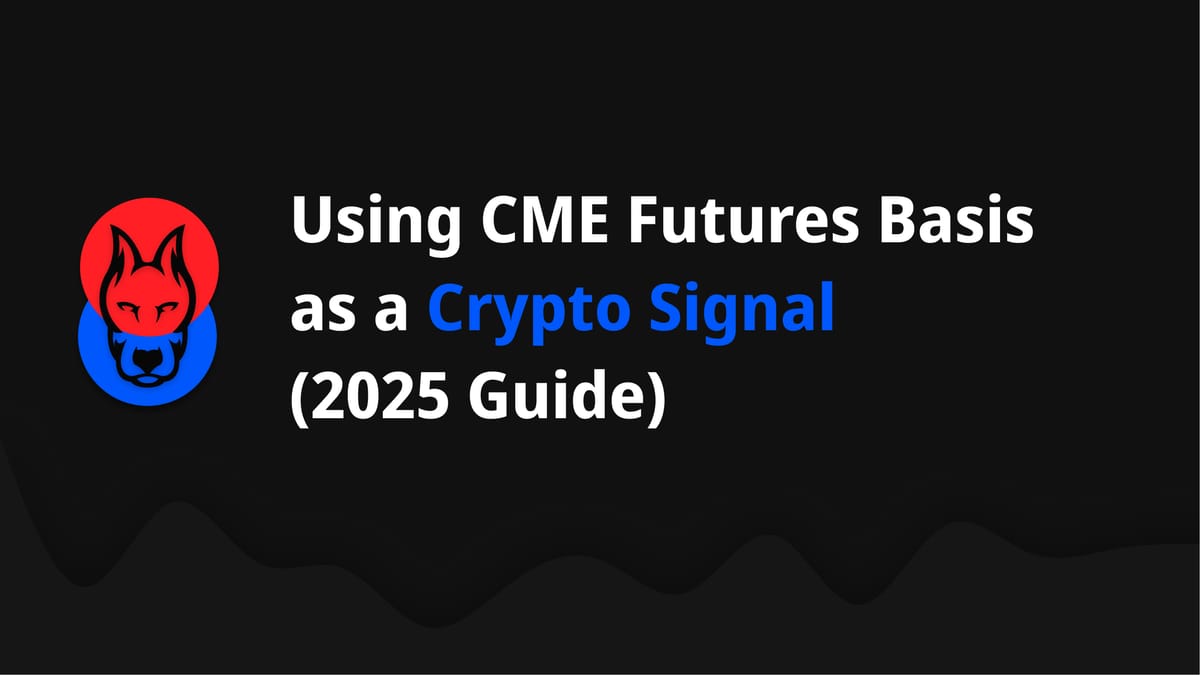Using CME Futures Basis as a Crypto Signal (2025 Guide)

The CME Bitcoin Futures basis has become one of the most reliable institutional signals for crypto markets. For traders, analysts, and funds, it acts as a bridge between traditional futures pricing and spot market sentiment.
What is CME Futures Basis?
The basis is the difference between the price of CME Bitcoin futures and the underlying spot price.
- Normal range: 100–150 bps (1–1.5%).
- Expansion → Bullish leverage demand.
- Compression → Risk-off / hedging pressure.
In other words, the basis tells you how much institutions are willing to pay for leveraged exposure to Bitcoin via futures.
Why It Matters for Crypto Research
- Institutional sentiment → CME futures are used by hedge funds, asset managers, and ETFs. Basis levels show whether “real money” is leaning bullish or defensive.
- Liquidity indicator → Sharp compression often coincides with ETF outflows, stablecoin drains, or funding normalization on perps.
- Cross-asset link → The basis behaves like a bond spread — showing how much risk appetite is in the system.
👉 For crypto OSINT workflows, basis is a confirmation layer alongside ETF flows and ETH/BTC rotation signals.
Where to Track CME Basis
Here are the best tools and dashboards for monitoring basis in real time:
- CME Group BTC Futures — official contract data, settlement prices.
- Coinglass — futures dashboards with basis spreads across CEX and CME.
- Skew (by Coinbase) — institutional derivatives analytics.
- SoSoValue ETF Flow Dashboards — when combined with basis, helps detect true institutional rotation.
CME basis aligns tightly with ETF flow shocks and reacts when stablecoin inflows/outflows change liquidity regimes. For full workflow, check our OSINT Tools catalog.
Case Study: September 2025
- During $1.17B Bitcoin ETF outflows, the CME front-month basis collapsed to 85 bps, far below the 150 bps threshold.
- At the same time, perpetual funding normalized and ETH/BTC ratio broke higher, confirming broad de-risking across derivatives and spot markets.
- Traders who shorted BTC after the basis compression captured a 1.9% decline within 48h.
This shows that basis signals work best when aligned with ETF flows and stablecoin metrics.
Practical Trading Framework
1. Thresholds to watch:
- Expansion >150 bps → bullish leverage signal.
- Compression <100 bps → risk-off confirmation.
2. Combine with ETF flows:
- Inflows >$300M + basis expansion → long BTC.
- Outflows >$400M + basis compression → hedge/short exposure.
3. Use for rotation:
If ETH/BTC rises while CME basis compresses → capital likely rotating into ETH & Layer-2 ecosystems.
📌 Key Takeaways
- CME futures basis is a leading institutional signal for crypto markets.
- Works best when combined with ETF flow data and perp funding rates.
- Acts as a risk-on / risk-off barometer for institutional appetite.
- Essential for any crypto OSINT workflow or systematic trading model in 2025.
Go deeper with live market intelligence
Doberman VC tracks ETF flows, CME basis, and capital rotation in real time. Explore dashboards, alert schemas, and ready-to-use research tools.
Open Tools & Dashboards


